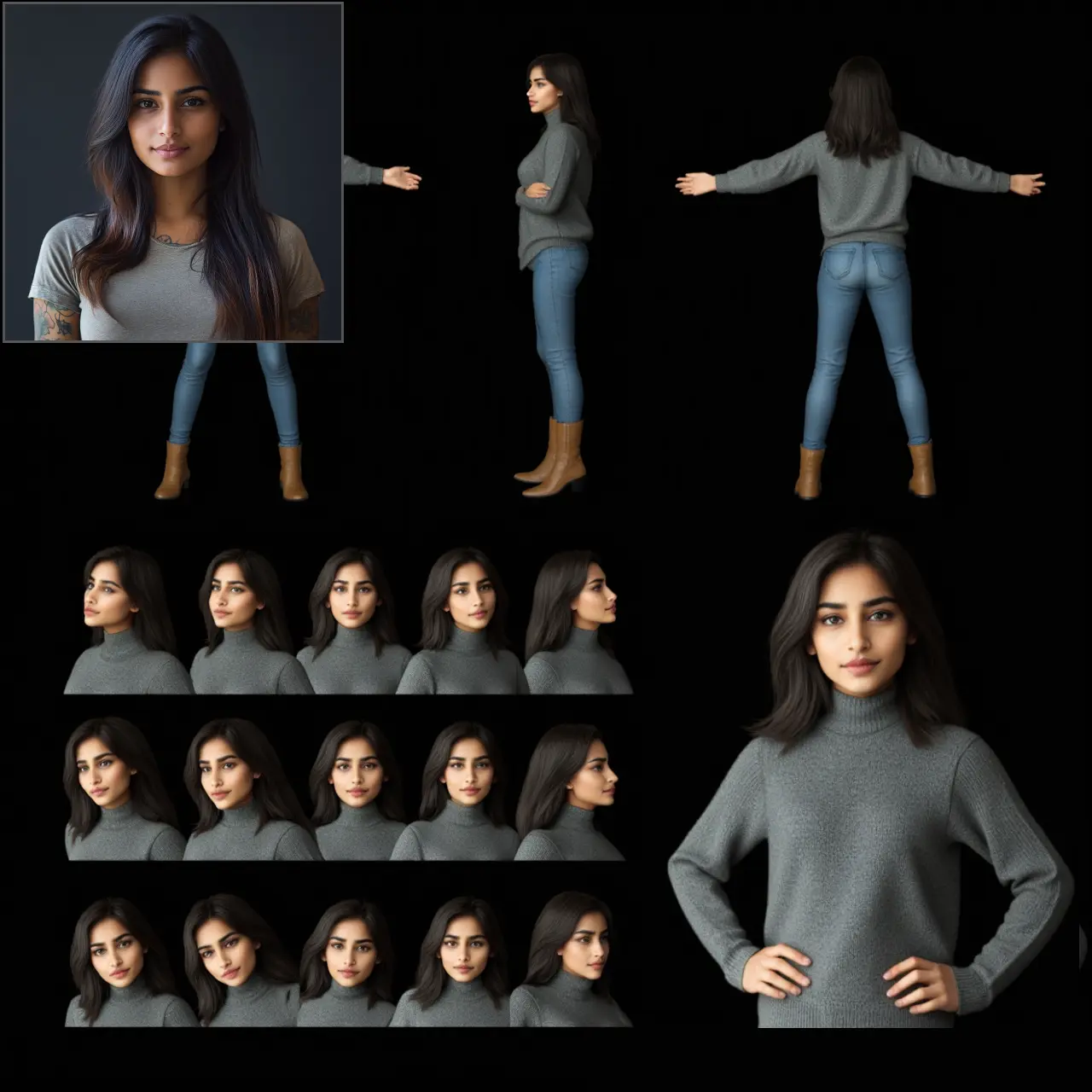ComfyUI Node: Primere Prompt Encoder
PrimereCLIPEncoder
CategoryPrimere Nodes/Dashboard
CosmicLaca (Account age: 3939days) Extension
Primere nodes for ComfyUI Latest Updated
2025-03-29 Github Stars
0.12K
How to Install Primere nodes for ComfyUI
Install this extension via the ComfyUI Manager by searching for Primere nodes for ComfyUI- 1. Click the Manager button in the main menu
- 2. Select Custom Nodes Manager button
- 3. Enter Primere nodes for ComfyUI in the search bar
Visit ComfyUI Online for ready-to-use ComfyUI environment
- Free trial available
- 16GB VRAM to 80GB VRAM GPU machines
- 400+ preloaded models/nodes
- Freedom to upload custom models/nodes
- 200+ ready-to-run workflows
- 100% private workspace with up to 200GB storage
- Dedicated Support
Primere Prompt Encoder Description
Node for encoding textual prompts into embeddings using CLIP model for AI art generation.
Primere Prompt Encoder:
The PrimereCLIPEncoder is a powerful node designed to encode textual prompts into embeddings that can be used in various AI art generation processes. This node leverages the CLIP (Contrastive Language-Image Pre-Training) model to transform text inputs into a format that can be interpreted by image generation models. By converting text into embeddings, the PrimereCLIPEncoder allows you to incorporate detailed and nuanced textual descriptions into your creative workflows, enhancing the ability to generate images that closely match the provided prompts. This node is essential for artists looking to bridge the gap between textual ideas and visual outputs, providing a seamless way to encode and utilize textual information in AI-driven art creation.
Primere Prompt Encoder Input Parameters:
text
This parameter represents the textual prompt that you want to encode. The text input is tokenized and processed by the CLIP model to generate embeddings. The quality and specificity of the text can significantly impact the resulting embeddings, so it's important to provide clear and descriptive prompts. There are no strict minimum or maximum values for the text length, but concise and relevant descriptions tend to yield better results.
token_normalization
This parameter controls whether the tokens in the text are normalized during the encoding process. Normalization can help in standardizing the input text, making the embeddings more consistent. The default value is typically set to True, but you can adjust it based on your specific needs.
weight_interpretation
This parameter determines how the weights of the tokens are interpreted during the encoding process. It affects the emphasis placed on different parts of the text, which can influence the resulting embeddings. The default value is usually set to a balanced interpretation, but you can modify it to prioritize certain tokens over others.
w_max
This parameter sets the maximum weight for the tokens during the encoding process. It helps in controlling the influence of individual tokens on the final embeddings. The default value is 1.0, but you can adjust it to fine-tune the encoding results.
clip_balance
This parameter controls the balance between different components of the CLIP model during the encoding process. It affects how the local and global embeddings are combined. The default value is 0.5, but you can modify it to achieve the desired balance for your specific use case.
apply_to_pooled
This parameter determines whether the pooled embeddings are included in the final output. Pooled embeddings provide a summary representation of the text, which can be useful in certain scenarios. The default value is True, but you can adjust it based on your requirements.
Primere Prompt Encoder Output Parameters:
embeddings
The primary output of the PrimereCLIPEncoder is the embeddings generated from the input text. These embeddings are numerical representations of the textual prompt, which can be used in various AI art generation models. The embeddings capture the semantic meaning of the text, allowing the models to generate images that closely match the provided descriptions.
pooled_embeddings
If the apply_to_pooled parameter is set to True, the node also outputs pooled embeddings. These provide a summary representation of the entire text, which can be useful for certain types of image generation tasks. The pooled embeddings offer a more generalized view of the text, complementing the detailed embeddings.
Primere Prompt Encoder Usage Tips:
- Use clear and descriptive text prompts to achieve better encoding results. The more specific and detailed your text, the more accurate the embeddings will be.
- Experiment with the
clip_balanceparameter to find the optimal balance between local and global embeddings for your specific use case. - Adjust the
w_maxparameter to control the influence of individual tokens, especially if certain parts of the text are more important than others.
Primere Prompt Encoder Common Errors and Solutions:
"Tokenization Error: Invalid text input"
- Explanation: This error occurs when the text input cannot be properly tokenized by the CLIP model.
- Solution: Ensure that the text input is a valid string and does not contain any unsupported characters or formatting.
"Normalization Error: Failed to normalize tokens"
- Explanation: This error occurs when the token normalization process fails.
- Solution: Check the
token_normalizationparameter and ensure it is set correctly. If the issue persists, try disabling normalization.
"Weight Interpretation Error: Invalid weight interpretation value"
- Explanation: This error occurs when the
weight_interpretationparameter is set to an invalid value. - Solution: Verify that the
weight_interpretationparameter is set to a valid option. Refer to the documentation for acceptable values.
"Embedding Generation Error: Failed to generate embeddings"
- Explanation: This error occurs when the CLIP model fails to generate embeddings from the input text.
- Solution: Ensure that all input parameters are set correctly and that the text input is valid. If the problem continues, try simplifying the text prompt.
Primere Prompt Encoder Related Nodes
RunComfy is the premier ComfyUI platform, offering ComfyUI online environment and services, along with ComfyUI workflows featuring stunning visuals. RunComfy also provides AI Playground, enabling artists to harness the latest AI tools to create incredible art.

